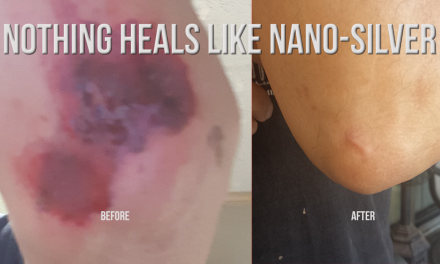As COVID-19 ravages the countryside, we have garnered a new understanding of how this disease preys on a weakened immune system. The Centers for Disease Control and Prevention is now tracking the top three conditions linked to the virus: diabetes mellitus, chronic lung disease and cardiovascular disease.1 Each is linked to vitamin D deficiency.
Former CDC Chief, Dr. Tom Friedan was recently quoted on Fox News affirming, “Vitamin D supplementation reduces the risk of respiratory infection2, regulates cytokine production3 and can limit the risk of other viruses4 such as influenza. A respiratory infection can result in cytokine storms5—a vicious cycle in which our inflammatory cells damage organs throughout the body— which increase mortality for those with COVID-19.” Dr. JoAnn Manson, Professor of Medicine, Harvard Medical School6 states in a video presentation on Medscape, “There is emerging and growing evidence that vitamin D status may be relevant to the risk of developing COVID-19 infection and to the severity of the disease,” adding, “Vitamin D has an immune modulating effect and can lower inflammation.”
Sadly, we are also seeing evidence of health care disparity among African Americans who, in an analysis conducted by the Washington Post7, are contracting and dying of the disease at a higher rate. The Post analysis shows that counties that are majority-black have three times the rate of infections and almost six times the rate of deaths as counties where white residents are in the majority. In Michigan, African Americans, who represent 14 percent of the population, account for more than 33 percent of cases and 40 percent of deaths. Similar statistics are mirrored in Chicago where 70 percent of COVID-19 related deaths were black, a rate six times higher than that of white residents. It is bears noting that vitamin D deficiency is more prevalent among African Americans than other Americans and, in North America, most young, healthy blacks do not achieve what scientists consider an optimal blood serum level, defined as 30 ng/ml by the Institutes of Medicine at any time of year.8
The CDC has acknowledged that the data suggests health disparities, including underlying health conditions, access to health care, and living and work conditions, make the African American population particularly vulnerable9. According to their analysis of COVID-19 deaths for New York, where race and ethnicity data were available, the death rate among Black/African American persons was 92.3 deaths per 100,000 population, and 74.3 for Hispanic/Latino persons; figures substantially higher than that of white (45.2) or Asian (34.5) persons. Which takes us back to vitamin D.
There is a sound body of research on the health and immune system benefits of vitamin D and a flurry of new reports, some of which have not yet been peer reviewed, from scientists and health care providers around the world who are working to connect the dots between vitamin D deficiency and the underlying conditions associated with increased severity or complications of COVID-19. The most recent is a report on the mean levels of vitamin D for 20 European countries. The study concluded low levels of vitamin D were strongly linked to morbidity and mortality associated with COVID-19 in yet another highly vulnerable group, the elderly population.10
Achieving an effective vitamin D level is essential for your overall health and it is a critical component for building your immune system. An estimated 89 percent of U.S. adults overall, and 91 percent of U.S. children and teens, aren’t getting recommended levels of vitamin D.11 What is the recommended level? Forty-eight high-profile vitamin D researchers from around the globe agree that 40–60 ng/ml is the ideal range for vitamin D. If you’ve had your level tested recently it’s likely your test result ranged from 10-30 ng/ml. If you do take vitamin D on a regular basis, you may be higher. Effective supplementation, however, requires you know your serum level.
The primary source of vitamin D is the sun, and we live in a society that no longer tolerates extended time in the sun without applying sunscreen. Stay-at-home orders have complicated getting enough sun and frankly, unlike many nutrients, you can’t eat your way to a healthy vitamin D level. Fortunately, vitamin D supplementation is an inexpensive, effective and simple way to resolve deficiencies if taken in the right amounts. Knowing your levels requires testing, and that can be done from the comfort of your own home.
Put the power of prevention in your own hands12.
GrassrootsHealth, offers a simple blood spot test you can have delivered to your home. With your results, you can use the vitamin D calculator to see how much vitamin D you need to take to get achieve that optimal level of 40-60 ng/ml. According to published research, vitamin D levels of 50 ng/ml appear to protect against viral respiratory infection.12 Everyone has just enough time before the winter flu and cold season to monitor and increase your vitamin D level to bolster your immune system.
There is no reason to hesitate. Supplementation is safe. The latest Institute of Medicine report indicates 10,000 IU/day is considered the NOAEL (no observed adverse effect level) and 4,000 IU/day is safe for adults who are age 19 and older. The appropriate intake for you depends on your age, race, lifestyle and latitude of residence. Know your vitamin D level so you can live your future life well.
References
- https://www.cdc.gov/mmwr/volumes/69/wr/mm6913e2.htm?s_cid=mm6913e2_w#T1_down
- https://www.ncbi.nlm.nih.gov/pmc/articles/PMC3543548/
- https://journals.plos.org/plosone/article?id=10.1371/journal.pone.0130395
- https://academic.oup.com/ajcn/article/91/5/1255/4597253
- https://www.sciencedaily.com/releases/2014/02/140227142250.htm
- https://www.medscape.com/viewarticle/930152?utm_source=Dr.+Manson+Vit+D+COVID+-+Thurs+5%2F14&utm_campaign=Newsletter&utm_medium=email
- https://www.washingtonpost.com/nation/2020/04/07/coronavirus-is-infecting-killing-black-americans-an-alarminglyhigh-rate-post-analysis-shows/?arc404=true
- https://pubmed.ncbi.nlm.nih.gov/16549493/
- https://www.cdc.gov/coronavirus/2019-ncov/need-extra-precautions/racial-ethnic-minorities.html
- https://link.springer.com/article/10.1007/s40520-020-01570-8
- https://www.ncbi.nlm.nih.gov/pmc/articles/PMC2883344/
- https://www.preprints.org/manuscript/202003.0235/v1?fbclid=IwAR3aL2ljr6KgZvjOk8S1Q0_lK62p7lVW_MlI2EnqdzCxINy0LyotJhJuYYs











